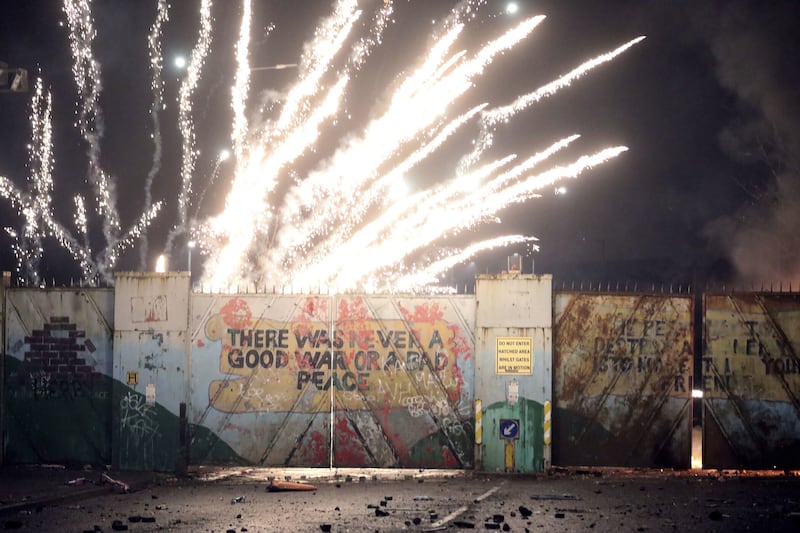It was September 10 1969, when the British Army began erecting the first official barricade of the most recent Troubles following a bloody summer that including the burning of Bombay Street.
Makeshift barriers had already been erected by residents defending various points around the Falls Road, but the one on what is now Cupar Way between the Shankill and the Falls become the first solid and permanent structure.

It was five feet high and consisted two lines of barbed between solid steel posts embedded in the ground. This would soon be replaced by corrugated iron sheeting 10 feet tall, It is now 45 feet tall, arguably the most famous peace walls in the region and a tourist attraction.
The second was erected on what was then Hooker Street off the Crumlin Road, just north of Flax Street, the focus of calls from some to close again the peace gate following recent clashes between youths from Ardoyne and Woodvale.

Over the years, walls and other barriers continued to be constructed, mostly in Belfast but also most notably in Derry, Portadown and Lurgan. They range from high concrete walls, ones at a lower height, fences and gates.
On the day the Good Friday Agreement, April 10 1998, an interface at Gunnell Hill in Newtownabbey was approved. Ten years later what would become a 245 feet high mesh fence was erected along one side of Hazelwood Integrated College also in Newtownabbey. This is believed to be last permanent peace line constructed.

While there is some dispute over what constitutes a peace line, there are approximately 60 structures that could be described as permanently structures in place along interfaces.
In 2013, the Executive vowed to remove all barriers “by mutual consent” within a decade. It was ambitious and, it turns out, entirely unattainable. Instead, some 13 permanent barriers have been removed entirely or replaced with some type of gate, as in Flax Street.









